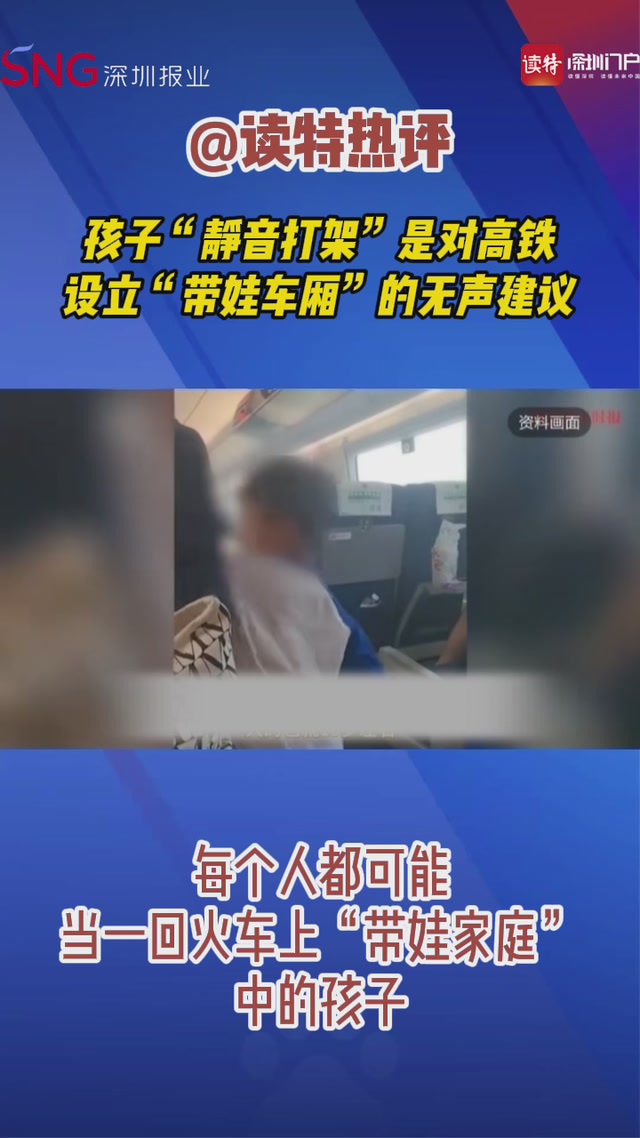Video address loading… Please wait
Ad remaining: –S
On August 18th, on a high-speed train from Shanghai Hongqiao to Dalian North, two young brothers started fighting while their mother was using the restroom. The entire altercation was silent—they only used their hands, not their voices. A nearby passenger and a train attendant tried to intervene but were unsuccessful. Shortly after, the mother returned and separated the two. After a passenger recorded and shared the scene online, many netizens praised the children for not disturbing other passengers and suggested that high-speed trains establish “family-friendly carriages” to prevent children’s disruptive behavior from bothering others.
Children are naturally active and energetic, especially during long journeys where confined seating and extended travel times can make them restless. However, high-speed trains, as enclosed public spaces, have high expectations for quiet. Disruptive behaviors like loud shouting or running around often lead to passenger dissatisfaction and can even escalate into conflicts between travelers and parents. In this context, the brothers’ “silent fight” was seen by some as a refreshing exception.
However, one of the brothers is 5 years old and the other is 10—old enough to have a reasonable understanding of train etiquette. For younger children, expecting them to remain quiet for the entire journey is often unrealistic.
Fuzhou Railway authorities have experimented with designating children’s activity areas, providing toys, books, and interactive sessions to help children release energy and avoid disturbing other passengers. This kind of humane and differentiated public service innovation offers a reference for addressing disruptions caused by young travelers.
Anyone could find themselves traveling with children on a train, so introducing “play carriages” or “family-friendly compartments” on high-speed trains is a broadly beneficial measure and has increasingly become a societal consensus.
Of course, creating such carriages involves modifications and would inevitably increase operational costs. How to manage these additional expenses requires a reasonable solution.
In fact, the issue of children being noisy and disturbing others is even more pronounced on conventional trains, so “family carriages” are also needed there.




